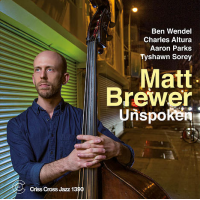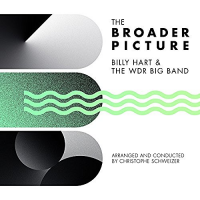Home » Jazz Articles » Extended Analysis » Yes: Tales from Topographic Oceans (Definitive Edition)
Yes: Tales from Topographic Oceans (Definitive Edition)
The album is, of course, Tales from Topographic Oceans, and while it would be Yes' most controversial album during its "classic era" from 1971-1977, it's also an album that has largely suffered from poor transfers in the digital world, the result of less than ideal master sources and subsequent remastering of same, ultimately failing to capture its expansive compositional densities and cinematic instrumental/vocal scope.
Originally released as four side-long tracks on a two-LP set, neither the 1994 Atlantic CD release nor, even worse, the expanded 2003 two-CD Rhino remaster delivered, let alone improved upon, the sound of the original recording. The Rhino edition was, in particular, an absolute travesty that—while making room for some intriguing bonus material (including a two+-minute intro to the opening "The Revealing Science Of God (Dance Of The Dawn)")—so butchered the sound as to largely remove the dynamics from an album that ranges from gentle, acoustic-driven progressive folk and surprisingly avant-edged concerns to harder rocking passages and full-on symphonic grandeur. It is also—perhaps in its attempts to bring out the sound of Alan White's drums more crisply and clearly—a harshly irritating listen.
All of which has done a complete disservice to one of the most fiercely determined albums from the days when progressive rock often sold in the hundreds of thousands—in some cases, even, in the millions.
That would be reason enough for someone with a track record to take another kick at the can and attempt to to truthfully convey what, irrespective of opinion, is irrefutably Yes' most sweepingly ambitious album to date—its four 18-to-21-minute tracks reflecting singer Jon Anderson's interpretation of Paramahansa Yogananda's 1946 book Autobiography of a Yogi, specifically a footnote describing the shastras: four bodies of Hindu texts that, as the author writes, "convey profound truths under a veil of detailed symbolism."
In the midst of impressive new 5.1 surround sound and stereo mixes for Definitive Edition reissues of the triple-punch, back-to-back releases of 1971's The Yes Album (Panegyric, 2014) and true breakout, Fragile (Panegyric, 2015), along with 1972's classic Close to the Edge (Panegyric, 2013) and a similarly revealing and, yes, definitive version of 1974's somewhat controversial but still highly regarded Relayer (Panegyric, 2014), Steven Wilson's on again/off again, three-year "quest to do justice...[to what] just may be Yes' pre-eminent masterpiece" has finally opened the album up, revealing its particular multiplicity of layers with crystal clarity while, at the same time, addressing a bevy of sonic and dynamic issues that have plagued the album, indeed, since it was first released on CD...and, to some extent even back to the album's original release in late '73.
While some of Wilson's remixed reissues have also included instrumental mixes (usually stereo only) with all vocals removed, few are as revealing as those on Tales from Topographic Oceans. As instrumentally dense as the album is—in particular where Yes guitarist Steve Howe has layered numerous instruments and, on the closing "Ritual (Nous Sommes Du Soleil)," with drummer Alan White's orchestrated percussion freak out—a close listen to Wilson's crystal clear "with-vocals" mixes will, of course, still reveal everything to be there. But with the richness of Anderson's oft-times similarly layered vocal parts—made even more expansive with the addition of guitarist Steve Howe and bassist Chris Squire's background singing—the smaller details that make Topographic Oceans such an enriching experience can sometimes be a bit obscured...most likely because most ears intrinsically gravitate towards the vocalist(s). Yes, Wilson's mixes render the album's multiplicity of parts more clear than ever before, but the value of being able to focus solely on the instrumental components is not just revelatory, it's also completely captivating on its own merits...and is a means of appreciating (surprising as it may seem) the space that imbues the album as much as its multifarious compositional details.
It's funny how time can alter perspective; upon its release, Topographic Oceans sometimes felt a bit bloated—an over-indulged work that nevertheless possessed many moments of the inimitable creative spark that had so defined the group since inception, but seemed to grow stronger and more daring with each successive album. Still, despite possessing no shortage of ambition and a collective musical genius rarely equalled in the progressive rock world of its time, there remained accusations of superfluous excess—accusations that, in retrospect, may have been less a function of the group's work and more a reflection of a music media that had begun to fall out of love with progressive music's often complex and unrelentingly adventurous spirit. Years later, however, coming back to the record without the biases of the time (even with just Rhino's dreadful remaster) have yielded more generous and sympathetic views towards an album that may not have possessed the exhilarating immediacy of Close to the Edge or Relayer's long-form perfections; still, with the requisite attention, Topographic Oceans reveals itself as an experience equally rewarding and equally perfect...if not more so.
Once past the sheer length and the demands of this four-part suite—not unlike the symphonic classical music that, to a significant extent, lies at the heart of Topographic Oceans' broad-scoped and instrumentally expansive beauty—absorbing its entire 81-minute duration in a single sitting represents a rarely matched journey of intellectual, emotional and spiritual enrichment. There are those who've tried to copy Topographic Oceans sheer duration ("the prog epic!!"), but few have achieved such an ideal confluence of the compositional, performance-driven and spiritual nature of a recording whose germination came from Anderson and Howe's late-night work in numerous hotel rooms while Yes was on tour in support of Close to the Edge; work that culminated in a single, all-night marathon session in Savannah, Georgia on April 20, 1973 where, as Sid Smith relays in his particularly absorbing and informative liner notes, "Anderson and Howe emerged ... at 7am with the broad outline of four sides of music."
That Anderson and Howe—whom the singer managed to interest in both the book and musical concept of four side-long pieces mirroring the shastas—literally completed the vocal, lyrical and instrumentation outline of the album in a single overnight hotel room session is a marvel in itself...yet another indicator of the seemingly relentless explosion of musical creativity that took place from the mid-'60s through to the mid-to-late '70s. That the recording was fully written, rehearsed, recorded and released less than eight months later might seem unbelievable, were it not a fact.
Records are, even if the music is timeless, in some way a reflection of their time, and there's no doubt that groundbreaking music continued to be made in the decades that followed the release of Topographic Oceans. There's even a strong case to argue that, with the dissolution of major labels, we're in the midst of another artistic golden age right now, with artists creatively unencumbered and unfettered in ways that have, for most and for many years, been lost. But without the marketing and distribution power of a major label that made it possible for an album like Topographic Oceans to sell in the hundreds of thousands upon its initial release—if not the millions of its previous four albums including the live Yessongs (Atlantic, 1973), still far from a shabby number—it's a rare thing, nowadays, for artists who are pushing the envelope with such flagrant disregard for commercial prospects to enjoy such critical and popular success. It's no surprise, perhaps, that one of the few relatively young progressive musicians to garner increasing popular and critical acclaim is Wilson himself, his string of post-Porcupine Tree solo albums, from 2009's Insurgentes to 2016's 4 1/2, having positioned the singer/guitarist/keyboardist/composer/bandleader on an ongoing upward trajectory with a still growing fan base.
It's not a difficult leap to suggest, in fact, that were an album like Topographic Oceans released today, chances are that it might make a momentary splash but would then more than likely be lost in the sheer volume of music being released on a weekly basis. And that would be a shame, because whether or not Topographic Oceans is a stone-cold masterpiece or a flawed gem that still has plenty of charm and moments of brilliance, it was, at the very least, afforded the opportunity to become the visible classic that many Yes fans still believe it to be.
That said, the making of Topographic Oceans was not without its challenges, not the least being a keyboardist, Rick Wakeman, so unhappy with the album 's concept, length and direction that he subsequently left the group after its tour in support of the record from November, 1973 through April, 1974, only to rejoin the band three years later (pushing out Relayer's keyboardist, Patrick Moraz) for the more concise, still superb but nowhere near as boundary-pushing Going for the One (Atlantic, 1977).
You had to give it to Yes, however; it had chutzpah. After Anderson and Howe finished creating the overall outline, various thematic segments and instrumentation ideas, they had to sell it to the group, which then entered a marathon five months of writing sessions, rehearsals and, ultimately, recording...by no means an easy time for the band. While Howe and Anderson were thoroughly convinced of the project's validity, group co-founder/bassist Squire, White and, in particular, Wakeman were far from convinced.
Still, they were brought around enough to take Anderson and Howe's arsenal of ideas and gradually shape it into the four episodic yet still thematically linked suites at Emerson, Lake & Palmer's Manticore Studios before moving to Morgan Studios, where the album was recorded with by-now regular Yes producer/engineer Eddie Offord at the control board. It may have been a time of significant doubt and conflict but, as had been the case with the group since its earliest beginnings, everyone ultimately contributed ideas to the project. Sometimes doubt and conflict actually engenders the creative spark.
There are stories of converting Morgan Studios into a more conducive, "natural" environment, with the addition of cardboard cows and sheep, flowers and pots of greenery; as Wakeman recounts in Chris Welch's 2008 book Close to the Edge: The Story of Yes: "There were white picket fences ... All the keyboards and amplifiers were placed on stacks of hay." It was the kind of unorthodox behavior that could only have taken place in the '70s.
But beyond the recording itself, few artists would hit the road—with a stunning stage design from album cover artist Roger Dean—a full month before the release of a major statement like Topographic Oceans, delivering a marathon set list that opened with the complete 40 minutes of Close to the Edge, followed by a then-unfamiliar-to-fans Topographic Ocean in its entirety, and concluded with an additional 20 minutes of Fragile's "Heart of the Sunrise" and radio hit "Roundabout," plus a 10+ minute encore of either "Yours is No Disgrace" or "Starship Trooper," both from The Yes Album.
If it was a time of artistic/creative/personal differences, you'd never know it based upon the finished recording. Wakeman, who has largely maintained his critical view of the recording to this day, delivered some exceptional work. He may have been afforded few solo opportunities—barring a still album-defining, incendiary MiniMoog solo towards the end of the album-opening "The Revealing Science of God (Dance of the Dawn)"—but his ensemble work remains exceptional and, indeed, definitive to this day. As Smith documents, the keyboardist, amongst other things, based his Moog and Mellotron work on Howe's suggestion of "using C, E and A chords as a metaphor for the sea." And it's hard to top the liner note scribe's astute assessment of Wakeman's overall contribution to Topographic Oceans as "a masterclass in control and subtlety"—two qualities rarely used to describe the often flamboyant keyboardist, but which he'd already proven as part of his overall makeup for his work with the Strawbs and, in particular, David Bowie.
There are still Yes fans who bemoan Yes co-founder Bill Bruford's departure, despite White's tenure trumping the group's original drummer by decades—and it's understandable, at least to some extent, as they are two such very different drummers. Beyond Bruford's precise polymath approach to building his parts, he possessed an instantly recognizable kit sound (in particular his snare drum). But with Wilson's new stereo mix finally allowing White's kit to be heard as it should—sounding less like cardboard boxes and more like real drums—his performance on Topographic Oceans can finally be properly assessed.
For a drummer who'd previously played with The Beatles' John Lennon and George Harrison—an impressive pedigree, to be sure, but demanding in an entirely different way—his playing with Yes is finally revealed, after playing music originally performed by Bruford on most of Yessongs, as far more impressive than it might originally have appeared. A less mathematically precise and considerably looser player in approach, White's contributions still prove as key to Topographic Oceans' overall creative success as those of his band mates. The drummer's percussion blow-out (with contributions from Anderson and Squire) in the midst of the 22-minute joyous optimism that largely defines the album-climaxing "Ritual (Nous Sommes Du Soleil)" turns Topographic Oceans more outré again—culminating in White's then-groundbreaking, synth-triggered drums reiterating the album's first-stated theme from "The Revealing Science of God"—but it's simply another example of how the entire group was able to view its music on a grander, more episodic scale as "Ritual" then turns more calm once again, only to build to its final climactic peak with Howe's watershed solo.
Squire had been a more engaged writing member of the band until this point—and may have felt squeezed a bit by Anderson and Howe's dominance here—but his playing on Topographic Oceans continues to demonstrate the increasingly stylistic and virtuosically creative path he'd demonstrated as early as the group's self-titled, 1969 Atlantic Records debut. His unmistakable tone and ability to be both harmonic/rhythmic anchor and melodic contrapuntal partner had never been more pronounced, and his solo, relatively early on during "Ritual," is yet another milestone on an album loaded with them...as well as a career high point for a bassist sadly lost in 2015, at a too-young 67. In combination with Anderson and Howe, Squire's contribution to Topographic Ocean' celestial vocal harmonies are as important to the record's imaginative nature as the broad instrumental palette that imbues a five-piece rock group with true symphonic breadth.
But despite the incontrovertible contributions of their band mates, Topographic Oceans remains largely Anderson and Howe's record, both conceptually and in their overall place throughout the album's epic, episodic, long-form writing. Howe, in particular, shines throughout with some of his most thoughtfully constructed work to date, from Julian Bream-inspired classicism at the end of the album's most challenging side, "The Ancient (Giants Under the Sun)," and ebb-and-flow electric guitar phrasing throughout the same piece's opening segment, to his exceptional steel-string acoustic work on the more folkloric "The Remembering (High the Memory)" and uplifting, dripping-with-emotion solo that closes "Ritual"—and the album—with a suitable majesty...and, ultimately, tranquility.
Anderson demonstrates, on this album, that along with having one of progressive music's most distinctive, instantly recognizable and impossible to copy voices, his reach and conceptual capabilities prove far broader than even his prior superlative work intimates. His singing on the studio run-through of "The Ancient"—part of the "Alternative Album" version of Topographic Oceans here that also includes, along with this track, a studio run-through of "The Revealing Science of God" (here titled "Dance of the Dawn"), culled from the 2003 expanded Rhino remaster—is a particular revelation, positing a vocalist whose ability to manage more oblique melodies made him, if not in other genres, certainly a singer of capabilities rarely matched by his colleagues in the rock world, as he doubles Howe's angular theme with ease.
Two studio run-throughs come from the 2003 Rhino reissue and will be, consequently, familiar to many—thankfully, not remastered with the same harsh sonics of that reissue's main album. A previously unreleased studio run-through of "The Remembering," called "High the Memory," is, like the other run-throughs, a valuable inclusion for anyone interested in the process of creating such an ambitious project, from early vocal harmonies (with Anderson sometimes layering them through overdubbing) to experiments in instrumental assignments that don't quite work and are adjusted for the final recording. The mix of "High the Memory" was one of many found, but chosen, as the liners about audio sourcing explain, as offering "the best insight into the work as it was being made in the studio," including both completely different melodies sung by Anderson, and harmonies overdubbed by the singer alone, subsequently adjusted, augmented and/or replaced by Squire and Howe.
It's unfortunate that there's no studio run-through of "Ritual," but a cleaned up, previously unavailable live version of the track, from Zurich in April, 1974—the second-to-last show on the Topographic Oceans tour and penultimate appearance by Wakeman until he reappeared on the July, 1977 release of Going for the One and subsequent six-month world tour—is still a worthwhile find. Sadly, there don't appear to be any decent quality recordings of a full Topographic Oceans show, and even the live version of "Ritual," as cleaned up as it is, is good but not great...though that's no fault of Panegyric's; only so much can be done with relatively low-fi live sources.
It hardly seems worth breaking an 81-minute suite like Topographic Oceans into special moments, as it's the seamless flow of compositional ideas, reiterated motifs from start to finish and overall stellar performances that make Topographic Oceans, indeed, the "pre-eminent masterpiece" that Wilson hopes his mix will reveal. And it does, especially when absorbing the entire suite in a single listen.
Still, one of the criticisms often levied at the original recording is that it lacks memorable melodies; hard to believe, in any case, but the clear catalyst for creating five brand new "single edits"—one each from "The Revealing Science of God," "The Remembering" and "The Ancient," and two culled from "Ritual." It's not likely, had they been released back in the day, that they'd have become hits, but here, in durations ranging from just under three minutes to just over four, they make clear that much of Topographic Oceans is as lyrical as it is experimental and challenging. And these are not simply excerpted bits; the mixes are often quite different, with different instrumental emphases that work better in the context of these shorter takes.
The Blu Ray edition continues Panegyric's ongoing creation of "box sets on a single disc" that have also been defining characteristics of its Wilson-remixed XTC reissues, including 1979's Drums And Wires (2014) and 1992's Nonsuch (2013). Beyond Wilson's new mixes in 5.1 surround and/or stereo, vocal (in 24-bit/96KHz resolution), there's the original album mix (24/192), along with Blu Ray exclusives including the alternate takes and single edits also included on CD (but here in 24/96 resolution), Wilson's instrumental mixes (also 24/96), along with not one but two needle-drop vinyl transfers: one, from the UK pressing, the other from a US banded promo—where, to address the record label's desire to render four side-long tracks more radio-friendly, short silences were inserted, seemingly arbitrarily, every five minutes or so.
As the notes indicate, inclusion of these needle-drops are not intended to be an "audiophile experience" for those hanging onto the idea that, sonically, vinyl still surpasses the digital realm—even with current technology far more advanced than early analog-to-digital capabilities of, say, the 1980s. Instead, they're included more for the sake of curiosity...and to demonstrate, with the constant, fade-outs/fade-ins of the banded US promo, just how annoying that practice truly was.
Also, with the US and UK vinyl versions coming from two different masters—but neither of them the original master tape, from which this edition's original stereo mixes are sourced—it becomes patently clear that those suggesting the vinyl release they bought, back in the day, is somehow better need answer a most salient question: which vinyl version? After all, it was common practice, at the time, to have masters that differed from place to place and were, consequently, substantially different experiences.
Wilson's new mixes were created from the original multi-tracks and then flat-transferred to both CD and Blu Ray at 16/44.1 and 24/96, respectively, while the original mix included here (also flat-transferred) at 24/192 was, as the audio sourcing liner note explains, a revelation of its own: "While sourcing tapes for the original mix, a high-resolution transfer of the original stereo master was discovered and this is presented here as the original stereo mix tape. This is the first time that this master has been available in the digital era. It is also presented without any further mastering."
While there is also a two-CD/two-DVD-A edition of Panegyric's Tales from Topographic Oceans, given the added material only available on the Blu Ray edition, it is the three-CD/Blu Ray version that is truly the definitive reissue of an album that may have received mixed reactions at the time of its release, but to which time has largely been much kinder. Wilson's new mix, whether stereo or surround, is respectful of the original while, at the same time, being far more dynamic and revelatory; and, for those who still prefer the original mix, it's sourced from a master being heard for the first time since the advent of the CD and at a resolution that renders it the best-sounding version possible.
With the addition of the studio run-throughs and one live track, two flat-transfer needle-drop vinyl versions and what will be, for some still critical of the record, eye-opening single edits, along with a set of informative liners with its own revelations, it's difficult to imagine how this fully expanded edition of Tales from Topographic Oceans could be any more complete...or, perhaps most importantly, any better—even from a design perspective, with two double-disc reproductions of the album's original gatefold cover, inside and out (and with each disc housed in its own paper sleeve) inserted into a cardboard slipcase that, again, faithfully reproduces Roger Dean's appealing artwork.
Not only has Wilson, indeed, succeeded in his "quest to do justice...[to what] just may be Yes' pre-eminent masterpiece," but Panegyric has also delivered, with this Definitive Edition of Tales from Topographic Oceans, the absolute best to date in its ongoing series of Yes reissues.
Track Listing
CD1: The Revealing Science Of God (Dance Of The Dawn); The Remembering (High The Memory); The Ancient (Giants Under The Sun). CD2: Ritual (Nous Sommes Du Soleil); Dance of the Dawn (2016 mix); Dance of the Dawn (studio run-through). CD3: High the Memory (studio run-through); Giants Under the Sun (studio run- through); Ritual (live, Zurich, April 1974); The Revealing Science of God (single edit); The Remembering (single edit); The Ancient (single edit); Ritual (single edit I); Ritual (single edit II). Blu-Ray: (New Stereo 24/96 LPCM Mix): The Revealing Science of God; The Remembering; The Ancient; Ritual; Dance of the Dawn (ext. version of The Revealing Science of God. (5.1 Surround 24/96 LPCM & DTS-HD MA): The Revealing Science of God; The Remembering; The Ancient; Ritual; Dance of the Dawn (ext. version of The Revealing Science of God). (Flat Transfer from original master 24/192 LPCM): The Revealing Science of God; The Remembering; The Ancient; Ritual. Blu-ray exclusives: Dance of the Dawn (studio run- through); High the Memory (studio run-through); Giants Under the Sun (studio run- through); Ritual (live, Zurich, April 1974); The Revealing Science of God (single edit); The Remembering (single edit); The Ancient (single edit); Ritual (single edit I); Ritual (single edit II). New Stereo Instrumental Mixes: The Revealing Science of God; The Remembering; The Ancient; Ritual; Dance of the Dawn (ext. version of The Revealing Science of God). Vinyl transfers: The Revealing Science of God (UK needle-drop transfer); The Remembering (UK needle-drop transfer); The Ancient (UK needle-drop transfer); Ritual (UK needle-drop transfer); The Revealing Science of God (US banded promo needle-drop transfer); The Remembering (US banded promo needle-drop transfer); The Ancient (US banded promo needle- drop transfer); Ritual (US banded promo needle-drop transfer).
Personnel
Yes
band / ensemble / orchestraJon Anderson: lead vocals, harp, cymbals, percussion; Steve Howe: electric 6-and 12-strings, steel and acoustic guitars, electric sitar, backing vocals; Rick Wakeman: grand piano, RMI Electra-Piano, MiniMoog, Mellotrons, Hammond C3, pipe organ; Chris Squire: acoustic & electric basses, timpani, backing vocals; Alan White: drums, piano, vibes, MiniMoog, Moog drum, tubular bells, assorted percussion.
Album information
Title: Tales from Topographic Oceans (Definitive Edition) | Year Released: 2016 | Record Label: Panegyric Recordings
Tags
PREVIOUS / NEXT
Yes Concerts
Support All About Jazz
 All About Jazz has been a pillar of jazz since 1995, championing it as an art form and, more importantly, supporting the musicians who make it. Our enduring commitment has made "AAJ" one of the most culturally important websites of its kind, read by hundreds of thousands of fans, musicians and industry figures every month.
All About Jazz has been a pillar of jazz since 1995, championing it as an art form and, more importantly, supporting the musicians who make it. Our enduring commitment has made "AAJ" one of the most culturally important websites of its kind, read by hundreds of thousands of fans, musicians and industry figures every month.




















